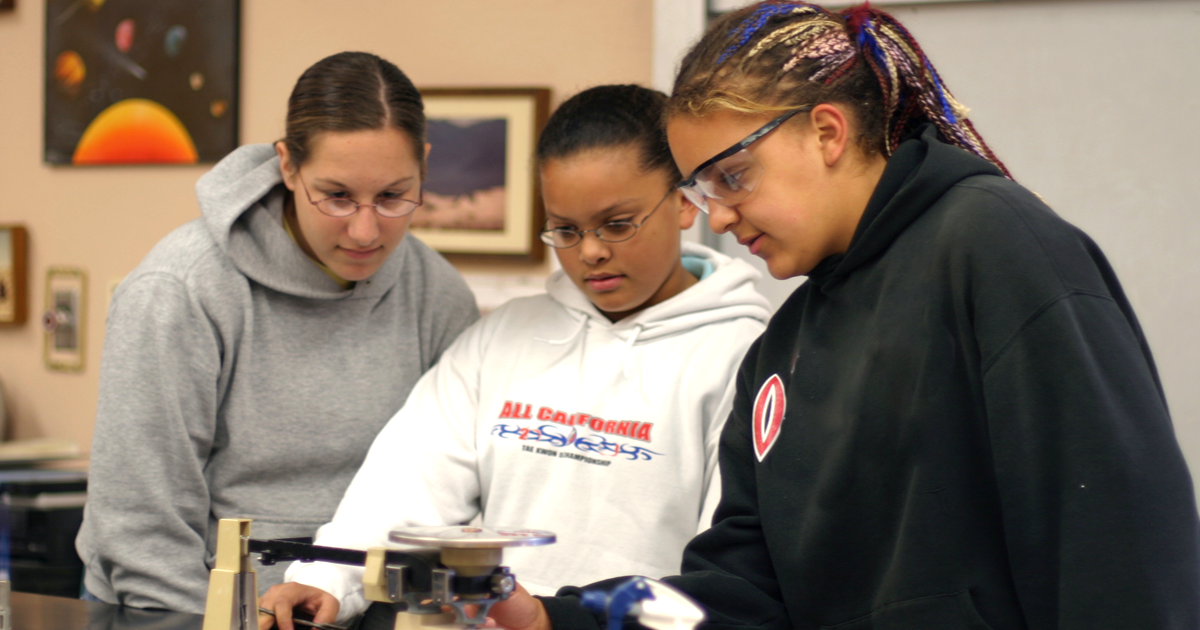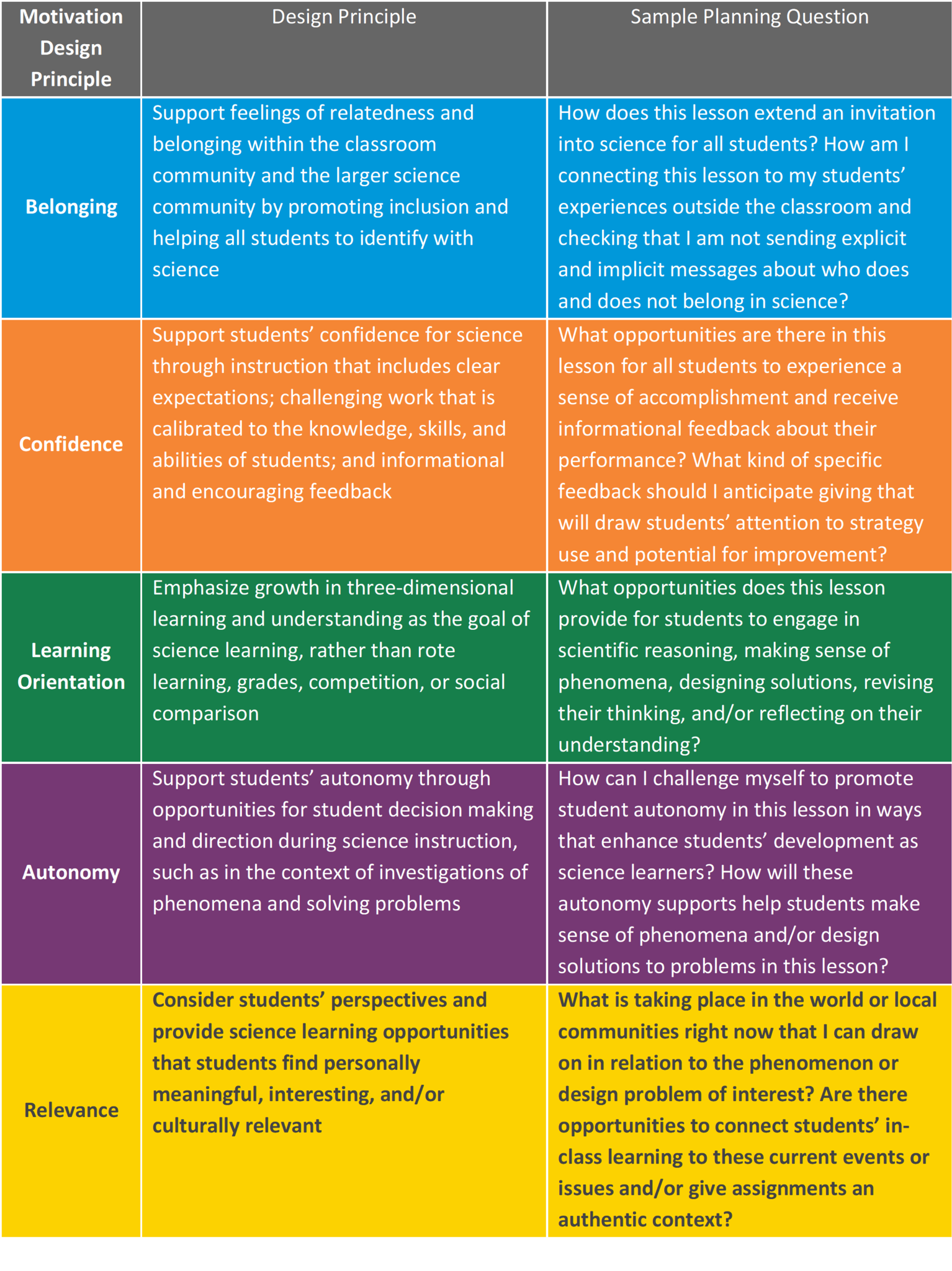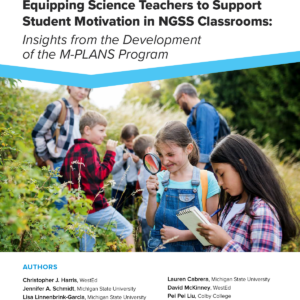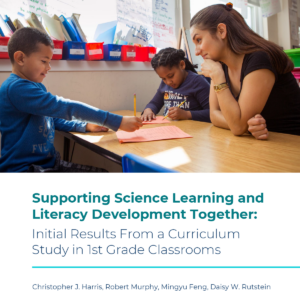Five Design Principles for Supporting Student Motivation and Engagement in Science Classrooms
Posted on

By Christopher Harris and David McKinney
This post originally appeared on NextGenScience’s On the Same Wavelength Blog.
This is an exciting time for science education. Spurred in part by the release of A Framework for K–12 Science Education and Next Generation Science Standards, science educators are changing their classrooms to enact instructional experiences that will help all their students to participate in the real-world practices of science. While this vision for learning has generated enthusiasm for many of us in the science education community, we must also recognize that it places higher demands on students in terms of participation, personal responsibility for learning, and intellectual effort in the classroom.
So, how can we support teachers in sparking and sustaining motivation and engagement in a manner that will enable all students to feel included, empowered, and interested to learn science?
To effectively support student motivation in today’s science classrooms, teachers will need to both leverage and value students’ background knowledge and experiences and connect these to rigorous science learning. Teachers must also be attentive to their own pedagogy and how their teaching actions interact with students’ motivation and engagement. Moreover, they need to plan instruction that will attract all students to science learning and actively engage them in the practices of doing science.
Currently, there are very few resources available to teachers to help support and sustain students’ motivation and engagement with regard to ambitious science instruction. Yet, science teachers often identify addressing students’ motivation as one of their most pressing needs. Our collaborative team—consisting of experts in STEM motivation and science education from WestEd, University of Nevada Las Vegas, and Michigan State University—sought to address this need.
We iteratively developed the M-PLANS (Motivation—Planning Lessons to Activate eNgagement in Science) professional learning experience, which is a research-based program that aims to enhance teachers’ knowledge about how to support student motivation and engagement in science using five theoretically- and empirically-based motivation design principles. As part of the development process, we worked closely with science teachers to design a program with concrete strategies that can be put into daily practice.
A unique feature of these design principles is that they take a broad research base about how to generally support student motivation and translate the findings into a set of concise and domain-specific guiding principles. We call them design principles because they provide a framework teachers can use to guide instructional design and planning to ensure their use throughout instruction.
The five principles—belonging, confidence, learning orientation, autonomy, and relevance—are shown in Table 1 with a short action-oriented description for each accompanied by sample questions to guide planning.
Table 1. Five Motivation Design Principles and sample planning questions to guide planning and instruction.

These five principles can be applied to lesson planning and translated into instruction to better support students’ science motivation and engaged classroom participation.
Our team also developed a comprehensive online toolkit and a set of quick tools to support implementation. The planning questions in Table 1 are taken from the toolkit and are intended to guide teachers in reflecting on their planning and instruction while working to incorporate the principles into their teaching. Importantly, these principles can help advance the goal of making science accessible and valuable to a diverse student body through encouraging teachers to:
- consider their students and the assets they bring to science learning;
- actively learn about who their students are and how science can be made relevant and meaningful for them; and
- remain attuned to their students throughout the school year.
As teachers take up these practices and use the principles in planning and instruction, we have found that they are better able to create a learning environment that invites all their students into science to learn about phenomena that are interesting and important to them.
Each teacher we have worked with has integrated the motivation design principles into their instruction in their own way. This is possible because they are principles — not prescriptions—for instructional design. They are meant to be used flexibly by teachers to meet the diverse needs of their unique sets of students.
The principles and accompanying tools equip teachers with knowledge and practices that invite students into science, help students feel successful in doing science, and help students see the relevance of science to their own lives. Incorporating the motivation design principles into instruction helps enhance the great work science teachers already do to further advance the vision that all students can feel included, empowered, and interested to learn science.
Learn more about the development of M-PLANS and insights from this effort in the new WestEd brief, Equipping Science Teachers to Support Student Motivation in NGSS Classrooms: Insights from the Development of the M-PLANS Program.
 Christopher Harris is Senior Director of Research in Science and Engineering Education at WestEd. He leads large-scale, multiyear, multi-institutional research, development, and evaluation projects and has been involved in developing scalable approaches to address the NGSS through curricula and assessments. His research often involves collaborative work with districts and schools for the purpose of informing both research and practice.
Christopher Harris is Senior Director of Research in Science and Engineering Education at WestEd. He leads large-scale, multiyear, multi-institutional research, development, and evaluation projects and has been involved in developing scalable approaches to address the NGSS through curricula and assessments. His research often involves collaborative work with districts and schools for the purpose of informing both research and practice.
 David McKinney is a STEM education researcher in learning and technology at WestEd. He has expertise in science teaching and learning, student motivation, and teacher professional development. He engages in design-based research in which he collaborates with teachers and researchers to better understand how to create learning environments that motivate and engage students in science.
David McKinney is a STEM education researcher in learning and technology at WestEd. He has expertise in science teaching and learning, student motivation, and teacher professional development. He engages in design-based research in which he collaborates with teachers and researchers to better understand how to create learning environments that motivate and engage students in science.
Join us on Facebook and LinkedIn to share how your school sparks and sustains motivation and engagement in science classrooms.


